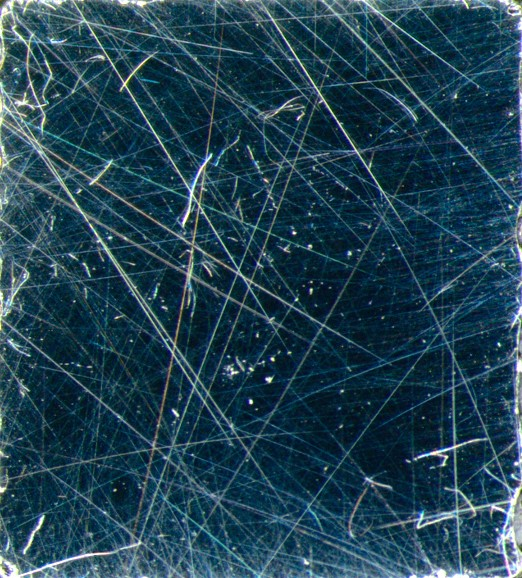Mar 9 2020
Metals can experience strange things when exposed to adverse temperatures. For example, iron stops being magnetic under extreme heat, and lead becomes a superconductor under extreme cold.
 A team led by Brad Ramshaw used a combination of ultrasound and machine learning to narrow the possible explanations for what happens to this large sample of uranium ruthenium silicide when it enters its so-called “hidden order.” Image Credit: Cornell University.
A team led by Brad Ramshaw used a combination of ultrasound and machine learning to narrow the possible explanations for what happens to this large sample of uranium ruthenium silicide when it enters its so-called “hidden order.” Image Credit: Cornell University.
For the last three decades, physicists have been perplexed by what actually occurs to uranium ruthenium silicide (URu2Si2) at 17.5 K (–256 °C). By quantifying heat capacity and other properties, physicists can infer that uranium ruthenium silicide goes through a certain kind of phase transition, but that is just as much anyone can say this with confidence. Meanwhile, many theories thrive.
A Cornell University collaboration, headed by physicist Brad Ramshaw, the Dick & Dale Reis Johnson Assistant Professor in the College of Arts and Sciences, utilized a combination of machine learning and ultrasound to narrow down the potential explanations for what exactly occurs to this quantum material upon entering this so-called “hidden order.”
The researchers’ study titled, “One-Component Order Parameter in URu2Si2 Uncovered by Resonant Ultrasound Spectroscopy and Machine Learning” was published in the Science Advances journal on March 6th, 2020.
In uranium ruthenium silicide, we have no idea what the electrons are doing in the hidden order state. We know that they don’t become magnetic, we know that they don’t become superconducting, but what are they doing? There are a lot of possibilities—orbital order, charge density waves, valence transitions—but it’s hard to tell these different states of matter apart. So the electrons are ‘hiding,’ in that sense.
Brad Ramshaw, Study Senior Author and Physicist, College of Arts and Sciences, Cornell University
Along with his doctoral student Sayak Ghosh, Ramshaw utilized high-resolution ultrasound spectroscopy to analyze the symmetry characteristics of a single crystal of URu2Si2 and the way these characteristics alter at the time of the hidden-order phase transition.
A majority of phase transitions are accompanied by an alteration in symmetry characteristics. For instance, in solids, all of the atoms are lined up in an organized manner, whereas it is not so in the case of liquids. Such changes in symmetry properties are not always evident and can be complicated to identify at the experimental level.
By looking at symmetry, we don’t have to know all the details about what the uranium is doing, or what the ruthenium is doing. We can just analyze how the symmetry of the system looks before the phase transition, and how it looks after.
Brad Ramshaw, Study Senior Author and Physicist, College of Arts and Sciences, Cornell University
Ramshaw continued, “And that lets us take that table of possibilities that theorists have come up with and say, ‘Well, these are not consistent with the symmetry before and after the phase transition, but these are.’ That’s nice, because it’s rare that you can make such definitive yes and no statements.”
Yet, the scientists faced difficulty. To examine the ultrasound data, the scientists would typically model it with wave mechanics. However, to analyze the purest form of URu2Si2, the team needs to utilize a cleaner and smaller sample. According to Ramshaw, this “oddly-shaped little hexagon chip” was very small and had too much ambiguity for a simple wave-mechanics solution.
Hence, both Ramshaw and Ghosh sought the help of Eun-Ah Kim, a professor of physics and the study’s co-author as well as her doctoral student Michael Matty, to create a machine-learning algorithm that can potentially examine the ultrasound data and expose the underlying patterns.
Machine learning is not only for an image-like data or big data. It can dramatically change the analysis of any data with complexity that evades manual modeling.
Eun-Ah Kim, Study Co-Author and Professor, Department of Physics, Cornell University
“It’s hard, because the data is just a list of numbers. Without any sort of method, it has no structure, and it’s impossible to learn anything from it,” stated Matty, the study’s co-lead author with Ghosh. “Machine learning is really good at learning functions. But you have to do the training correctly.
“The idea was, there is some function that maps this list of numbers to a class of theories. Given a set of numerically approximated data, we could do what is effectively regression to learn a function that interprets the data for us,” added Matty.
The machine-learning algorithm provided results that removed nearly 50% of the more than 20 probable explanations available for the hidden order. While it may not resolve the URu2Si2 riddle, it has provided a new method for dealing with data analysis issues encountered in experimental physics.
The machine-learning algorithm developed by the researchers can also be used on other quantum methods and materials, most importantly nuclear magnetic resonance (NMR) spectroscopy—the underlying process responsible for magnetic resonance imaging (MRI).
Furthermore, Ramshaw is planning to utilize the novel method to deal with the uncontrollable geometries of uranium telluride—a promising topological superconductor that could serve as a platform for quantum computing.
The study’s contributing authors included scientists from the Los Alamos National Laboratory, the National High Magnetic Field Laboratory, Leiden University in the Netherlands, and Max Planck Institute for Chemical Physics of Solids in Germany.
The study was financially supported by the Cornell Center for Materials Research, the National Science Foundation, and the U.S. Department of Energy with funding from the National Science Foundation’s Materials Research Science and Engineering Center program.